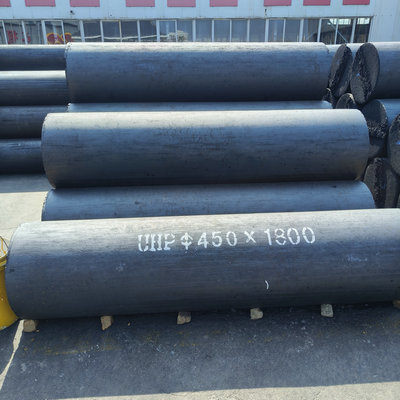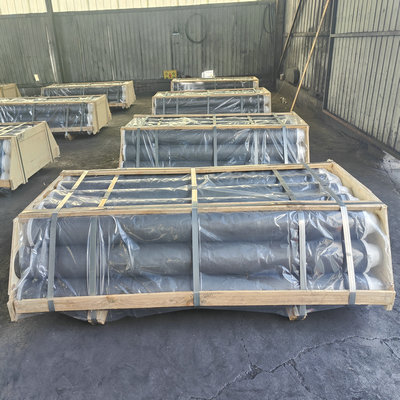Artificial graphite electrodes have emerged as a crucial component in various industries due to their exceptional properties and versatile applications. These electrodes are primarily used in electric arc furnace steelmaking, which is a vital process in the production of steel. However, their usage extends beyond just the steel industry, as they are also employed in non-ferrous metallurgy, such as aluminum production, and in the manufacturing of certain chemicals and materials.
In electric arc furnace steelmaking, artificial graphite electrodes play a pivotal role in the conversion of scrap or direct reduced iron into liquid steel. The electrodes are used to conduct electricity and generate the high temperatures required to melt the raw materials. Due to their high thermal conductivity and low electrical resistance, artificial graphite electrodes are able to withstand the extreme conditions within the furnace, making them an ideal choice for this application. Furthermore, their exceptional mechanical strength and resistance to thermal shock ensure a longer lifespan, thereby reducing maintenance and replacement costs.
Apart from steelmaking, artificial graphite electrodes are also utilized in non-ferrous metallurgy, particularly in aluminum production. During the smelting process, these electrodes are employed to supply the necessary energy for the electrolytic reduction of alumina into aluminum. The high current-carrying capacity and excellent heat resistance of artificial graphite electrodes make them well-suited for this application, enabling efficient and cost-effective aluminum production.
Moreover, artificial graphite electrodes find extensive use in the manufacturing of certain chemicals and materials. For instance, they are employed in the production of graphite products, silicon metal, and phosphorus, among others. The superior electrical conductivity and thermal stability of these electrodes make them a preferred choice for processes that involve high-temperature reactions and the generation of large amounts of heat. This, in turn, contributes to enhanced productivity and quality in the production of various chemical compounds and materials.
In addition to their diverse applications, artificial graphite electrodes are favored for their sustainability and environmental benefits. As a key component in electric arc furnace steelmaking, these electrodes contribute to the efficient recycling of scrap steel, thereby reducing the demand for raw materials and the environmental impact associated with their extraction and processing. Furthermore, their use in non-ferrous metallurgy supports the production of lightweight and corrosion-resistant aluminum, which has numerous applications in the automotive, aerospace, and construction industries, contributing to sustainable and eco-friendly practices.
Artificial graphite electrodes application is not limited to large-scale industrial processes but also extends to research and development in the field of electrochemistry. These electrodes are utilized in laboratory experiments and pilot-scale studies to investigate electrochemical reactions, electrocatalysis, and energy storage devices. Their high purity, uniformity, and controllable properties make them an ideal choice for such applications, facilitating accurate and reliable results in various electrochemical research endeavors.
Furthermore, the versatility of artificial graphite electrodes enables their use in other niche applications, such as electric arc lamps, resistance heating elements, and nuclear reactors. In electric arc lamps, these electrodes are used to generate intense light for specialized industrial and scientific purposes, while in resistance heating elements, they provide efficient heating in high-temperature industrial processes. Additionally, their use in nuclear reactors demonstrates their capability to withstand extreme radiation and temperature conditions, making them an indispensable component in nuclear energy generation.
Artificial graphite electrodes play a crucial role in various industrial processes, ranging from steelmaking and non-ferrous metallurgy to the production of chemicals and materials. The artificial graphite electrode properties, including high thermal conductivity, mechanical strength, and resistance to thermal shock, make them an ideal choice for applications that involve high temperatures and intense energy requirements. Furthermore, their sustainability, environmental benefits, and versatility further underscore their significance in modern industrial and scientific endeavors. As technology advances and new applications are discovered, artificial graphite electrodes are poised to continue contributing to the development and optimization of various processes across different industries.
Post time: Dec-08-2023








